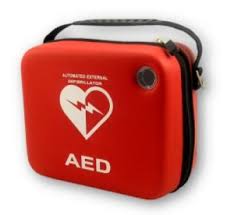|
For the latest life-saving information please:
 |
|
Schedule a Class at Your Location
|  | To schedule a class:
Call
617-312-3799
or Email dclinton@clintoncpr.com
|
|
|
Greetings!
Every five years, an international panel of leading experts in resuscitation gather, analyze the latest data, and adjust the CPR guidelines to reflect new layers of understanding. The new standards just went into effect and I want to bring you up to speed.
|
|
The New GuideLines - Effective April 2011
| |
C-A-B replaces A-B-C
 Unfortunately, most victims of out-of-hospital sudden cardiac arrest don't receive bystander CPR.
The new guidelines have changed the algorithm for adult, child, and infant CPR to now begin with chest compressions, followed by opening the airway, and then giving rescue breaths. The rationale behind the change is that some rescuers are hesitant to perform rescue breaths, and chest compressions are simple to perform. Chest compressions, which squish both the heart and the lungs, also provide the victim with some oxygen because the lungs suck in some air as pressure on the chest is released and the thoracic cavity expands. The hope is that by simplifying the algorithm, and starting with chest compressions, more people will jump in and help someone in cardiac arrest.
|
| Push Even Harder and Faster |  100+ Compressions per Minute 100+ Compressions per Minute
The new standards call for a rate of at least 100 compressions per minute, a depth of at least 2 inches for adult victims, and a depth of at least one third of the chest in infants and children.
Even the absolute best chest compressions in the world pump no more than a third as much blood as a normal heartbeat produces. As such, there is a need to pump hard and fast. Studies continue to show rescuers do not perform compressions hard or fast enough. There is a natural tendency to be concerned about breaking a rib or otherwise hurting the victim, but you can live with a broken rib. You can't live if your heart isn't pumping oxygenated blood to your body. Push hard and fast.
|
Use an AED on Infants
|  There is now sufficient data to justify the use of an Automated External Defibrillator (AED) on an infant in cardiac arrest. There is now sufficient data to justify the use of an Automated External Defibrillator (AED) on an infant in cardiac arrest.
An Automated External Defibrillator is a machine that analyzes the heart rhythm and can deliver a heartbeat-resetting electrical shock if a chaotic, non-perfusing rhythm is detected.
Ideally, a pediatric attenuator system would be used to deliver a lower dose of electricity to a child or infant less than 60 lbs, but you are allowed to use adult pads on an infant or child. The potential risks of the higher electrical dose are greatly outweighed by the potential benefits.
|
Clinton CPR
| |
Clinton CPR offers comprehensive and cutting-edge American Heart Association CPR and First Aid instruction throughout Massachusetts and the New England area.
As a Registered Nurse, CPR and First Aid Instructor, and Public Access Defibrillator Consultant, I provide my students with the highest quality CPR training, and I help establish life-saving Public Access Defibrillator programs that can improve a victim's chance of survival from the current out-of-hospital sudden cardiac arrest survival rate of 6% to upwards of 74% in cases where a shock is given in less than three minutes.
I hope you never need to use the skills I teach, but if you do, you'll be glad you trained with me. When it comes to learning how to save a life, go with the best.
Best Wishes,
Daniel A. Clinton, RN, BSN
Clinton CPR
|
|
|
|
|